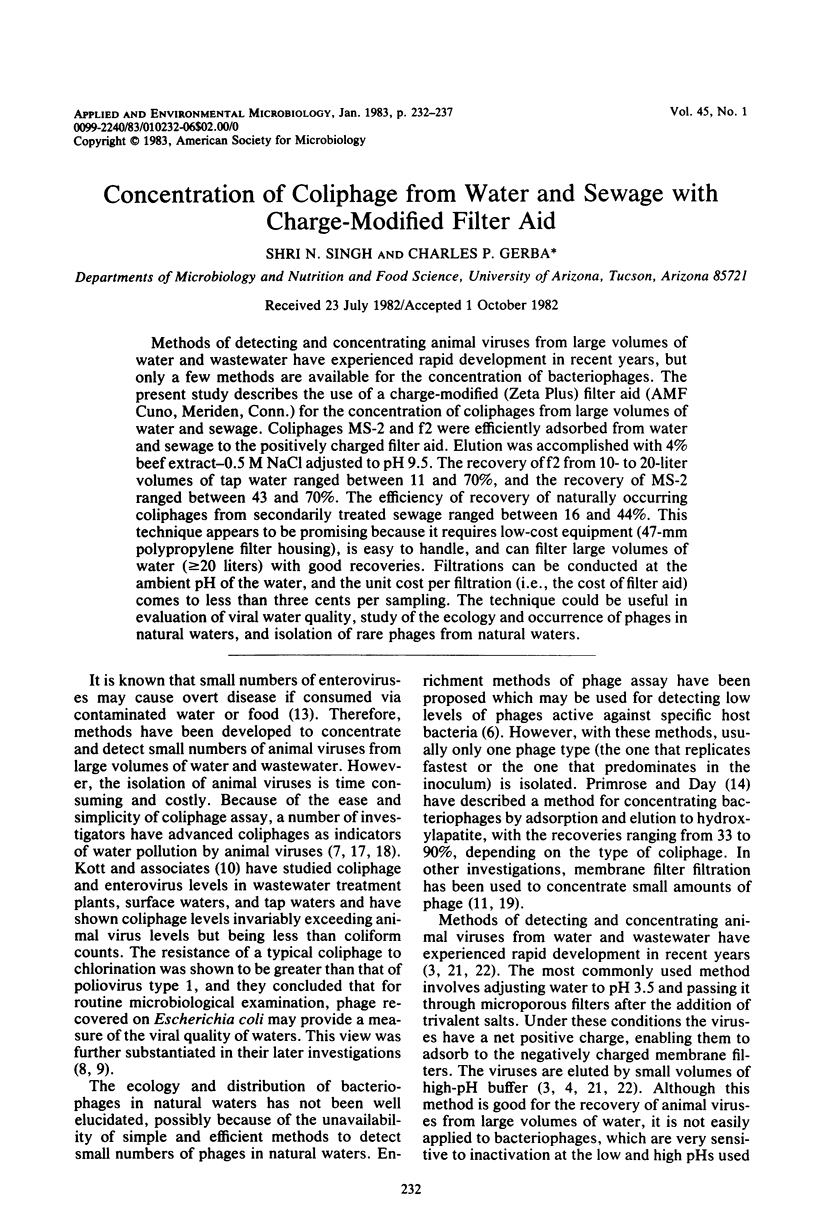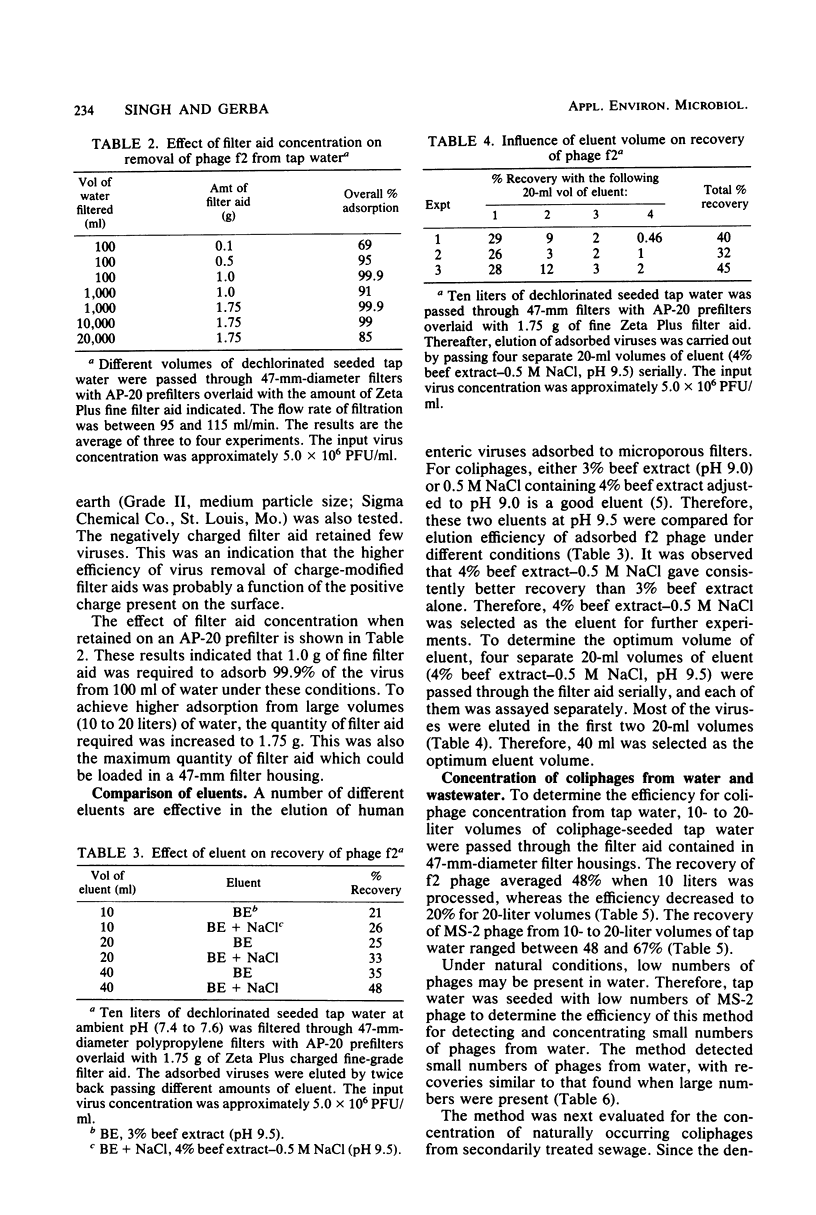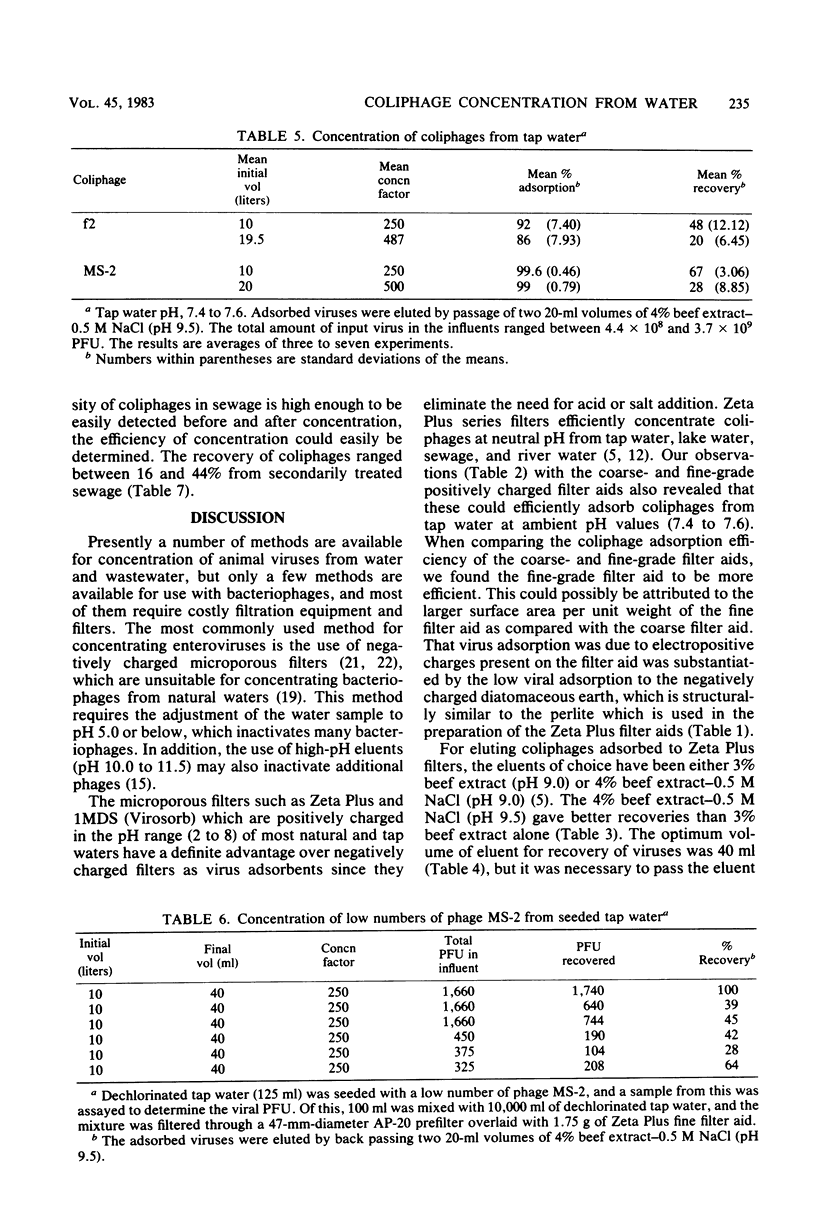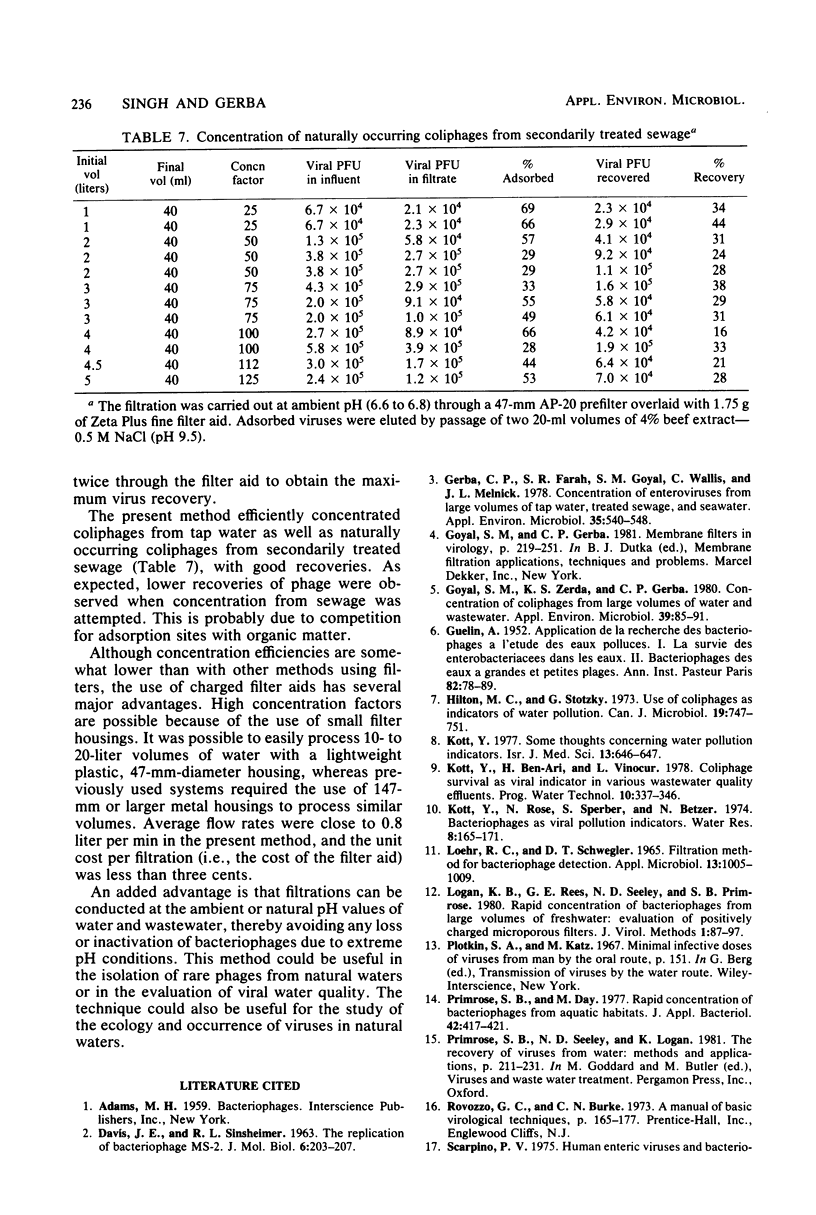Abstract
Methods of detecting and concentrating animal viruses from large volumes of water and wastewater have experienced rapid development in recent years, but only a few methods are available for the concentration of bacteriophages. The present study describes the use of a charge-modified (Zeta Plus) filter aid (AMF Cuno, Meriden, Conn.) for the concentration of coliphages from large volumes of water and sewage. Coliphages MS-2 and f2 were efficiently adsorbed from water and sewage to the positively charged filter aid. Elution was accomplished with 4% beef extract--0.5 M NaCl adjusted to pH 9.5. The recovery of f2 from 10- to 20-liter volumes of tap water ranged between 11 and 70%, and the recovery of MS-2 ranged between 43 and 70%. The efficiency of recovery of naturally occurring coliphages from secondarily treated sewage ranged between 16 and 44%. This technique appears to be promising because it requires low-cost equipment (47-mm polypropylene filter housing), is easy to handle, and can filter large volumes of water (greater than or equal to 20 liters) with good recoveries. Filtrations can be conducted at the ambient pH of the water, and the unit cost per filtration (i.e., the cost of filter aid) comes to less than three cents per sampling. The technique could be useful in evaluation of viral water quality, study of ecology and occurrence of phages in natural waters, and isolation of rare phages from natural waters.
Full text
PDF





Selected References
These references are in PubMed. This may not be the complete list of references from this article.
- DAVIS J. E., SINSHEIMER R. L. The replication of bacteriophage MS2. 1. Transfer of parental nucleic acid to progeny phage. J Mol Biol. 1963 Mar;6:203–207. doi: 10.1016/s0022-2836(63)80069-8. [DOI] [PubMed] [Google Scholar]
- GUELIN A., GOZDA WA-LE BRIS J. Application de la recherche des bactériophages a l'étude des eaux polluées I. La survie des entérobactériacées dans les eaux. II. Bactériophages des eaux a grandes et petites plages. Ann Inst Pasteur (Paris) 1952 Jan;82(1):78–89. [PubMed] [Google Scholar]
- Gerba C. P., Farrah S. R., Goyal S. M., Wallis C., Melnick J. L. Concentration of enteroviruses from large volumes of tap water, treated sewage, and seawater. Appl Environ Microbiol. 1978 Mar;35(3):540–548. doi: 10.1128/aem.35.3.540-548.1978. [DOI] [PMC free article] [PubMed] [Google Scholar]
- Goyal S. M., Zerda K. S., Gerba C. P. Concentration of coliphages from large volumes of water and wastewater. Appl Environ Microbiol. 1980 Jan;39(1):85–91. doi: 10.1128/aem.39.1.85-91.1980. [DOI] [PMC free article] [PubMed] [Google Scholar]
- Hilton M. C., Stotzky G. Use of coliphages as indicators of water pollution. Can J Microbiol. 1973 Jun;19(6):747–751. doi: 10.1139/m73-120. [DOI] [PubMed] [Google Scholar]
- Loehr R. C., Schwegler D. T. Filtration method for bacteriophage detection. Appl Microbiol. 1965 Nov;13(6):1005–1009. doi: 10.1128/am.13.6.1005-1009.1965. [DOI] [PMC free article] [PubMed] [Google Scholar]
- Logan K. B., Rees G. E., Seeley N. D., Primrose S. B. Rapid concentration of bacteriophages from large volumes of freshwater: evaluation of positively charged, microporous filters. J Virol Methods. 1980;1(2):87–97. doi: 10.1016/0166-0934(80)90017-8. [DOI] [PubMed] [Google Scholar]
- Primrose S. B., Day M. Rapid concentration of bacteriophages from aquatic habitats. J Appl Bacteriol. 1977 Jun;42(3):417–421. doi: 10.1111/j.1365-2672.1977.tb00709.x. [DOI] [PubMed] [Google Scholar]
- Seeley N. D., Primrose S. B. Concentration of bacteriophages from natural waters. J Appl Bacteriol. 1979 Feb;46(1):103–116. doi: 10.1111/j.1365-2672.1979.tb02587.x. [DOI] [PubMed] [Google Scholar]
- Sobsey M. D., Jones B. L. Concentration of poliovirus from tap water using positively charged microporous filters. Appl Environ Microbiol. 1979 Mar;37(3):588–595. doi: 10.1128/aem.37.3.588-595.1979. [DOI] [PMC free article] [PubMed] [Google Scholar]
- Wallis C., Melnick J. L. Concentration of viruses from sewage by adsorption on millipore membranes. Bull World Health Organ. 1967;36(2):219–225. [PMC free article] [PubMed] [Google Scholar]


